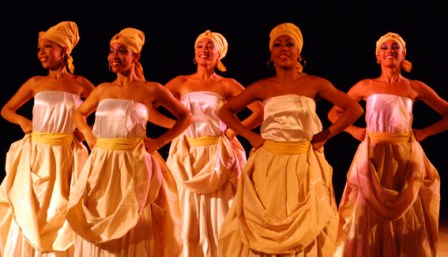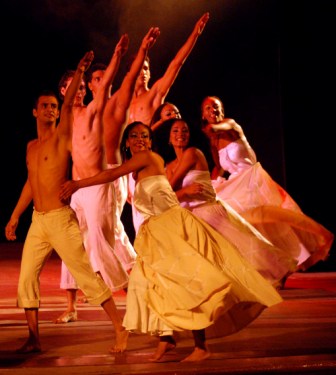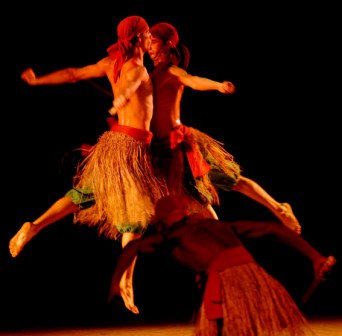A Night with Cuba’s Conjunto Folklórico
By Irina Echarry, Photos: Caridad

HAVANA TIMES, Sept. 17 –“The Conjunto Folklórico Nacional de Cuba is a perpetually renovated river, faithful to its ancestral origins,” notes researcher Rogelio Martínez Furé.
María Teresa hums the refrain of a song that she learned from her ancestors. She believes that her granddaughter should also know the lyrics because “it’s something that’s good for life. Believing in a saint and following their instructions helps you to be a better person.”
The granddaughter looks with her eyes full of the stage light; you see her moving from side to side, dressed in red, with euphoric movements. “I’m going to dance like that” she says applauding.

The public that attended Teatro América this weekend had the opportunity to enjoy a fine show given by the Conjunto Folklórico Nacional (the National Folkloric Group of Cuba) , which is now celebrating its 45 years of work.
María Teresa, perhaps without knowing it, has the same very clear objective that the company has pursued since its founding: to reclaim the musical and dance values of popular Cuban traditional culture.
The performance includes choreographies that represent different deities adored in the Afro-Cuban religion. Colors identifying each one of them, their accessories and movements accompany the rhythms that vibrate throughout the theater. The spectacle is called “Rhythms of Cuba.”
It also embraces the cha-cha-cha, as well as mambo popularized at the end of the 1940s by Dámaso Pérez Prado, and rumba, which was born among the poor in Cuban tenements, but which today is universal.
In honor of the truth, the most moving were dances dedicated to Yemayá – the sovereign of the ocean’s waters, goddess-mother of all orishas – and to Babbalú Ayé.

The performers danced around Yemayá displaying their flowing light-blue dresses that simulated the waves of the sea, which surround us everywhere.
The orisha of illnesses and plague came out staggering, with great dramatization in his dance, winning over the audience right from the beginning as he displayed his theatrical gifts.
The goddess that opens roads (or closes them), the master of the future – Elegguá – was another of those best represented from the point of view of dance.
María Teresa continued humming to the end. The audience in the packed theater sang the prayers and songs to the orishas.
Some followed the rhythm with their shoulders and feet. Others didn’t know the lyrics very well, but that didn’t prevent them – along with the rest of us – from patting themselves on the back for having chosen to spend this past Saturday night with the Conjunto Folklórico Nacional.
Click on the thumbnails to see all the photos in this gallery
























